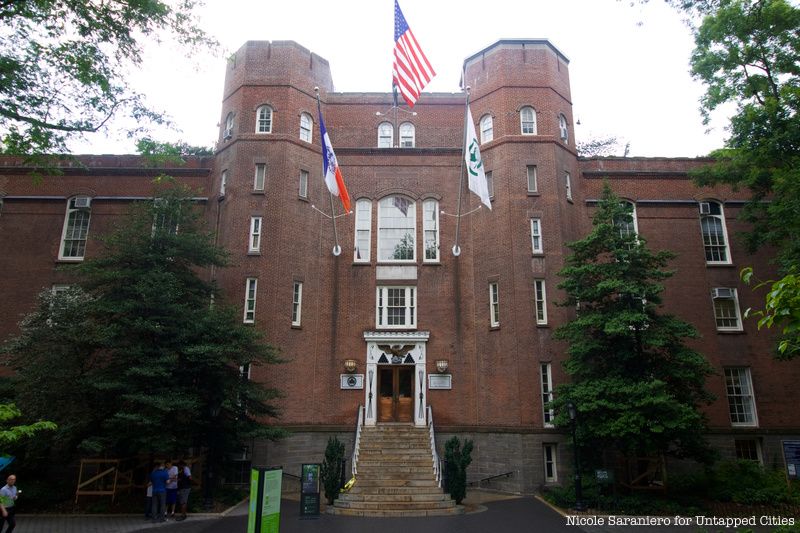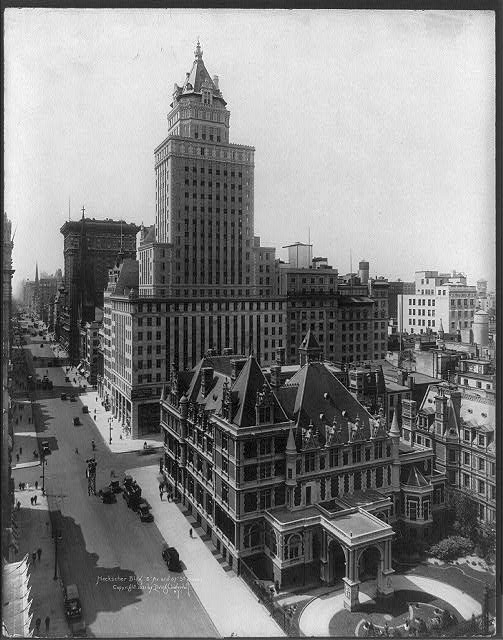The Berkshires Bowling Alley that Inspired "The Big Lebowski"
It’s been 36 years since the release of The Big Lebowski, the irreverent cult comedy by Joel and Ethan


In a city where nothing is sacred and almost every architectural landmark is liable for an overhaul (take 5 Pointz for instance), it may come as no surprise that many of NYC’s most famous museums had also undergone many drastic changes over the years. Just how drastic some of those changes were may shock you though. We’ve mentioned in the past how you used to be able to drive up to front of the Metropolitan Museum of Art (in an era when most people didn’t have cars yet no less), but now we’re going to provide you with this list of photos portraying the original incarnations of NYC’s most famous museums.
1. The Guggenheim MuseumThe Solomon R. Guggenheim Museum on 89th Street is probably one of the most visually iconic museums in the world. Yet this vintage photograph of the museum reveals that the building did at one point have a decidedly different layout. This is due to the absence of the museum’s current ten story limestone tower, which was designed by Gwathmey Siegel and Associates in 1992. Instead, the building shown above is four stories tall and was constructed by Frank Lloyd Wright’s own son-in-law, William Wesley Peters.
The photograph shows the now defunct building as it stood one year before its completion in 1968. Peters’ familial networking certainly paid off big time, which allowed him to take part in one of the most recognizable projects of his already renown father-in-law. But even though his futuristic tower was eventually replaced, Peters acknowledges the importance of this experience. According to a lecture he gave to architecture students at Yale in 1963, “It has been my great privilege to follow and participate for these intervening years in the architectural thought which proceeded from and surrounded that great force.” Peters died in 1991, one year before the Gwathmey tower was completed.

Inside the studio of Gertrude Vanderbilt Whitney
If this photograph of the entrance to the Whitney Museum does not look familiar to you, it’s probably because it no longer exists. This image of the museum’s oft forgotten original location was taken before it found its way to its current location at 945 Madison Avenue. The entrance to the Whitney depicted in this photograph was taken in 1931 when the museum first opened on West 8th Street in Greenwich Village. The West 8th Street location was constructed under the supervision of architect Noel L. Miller by converting three row houses. Gertrude Vanderbilt Whitney, an art patron who founded the museum, created the Whitney as a way to promote new and cutting edge artists from America.
Before Gertrude Whitney’s ambitiousness led the museum to its current location during the mid sixties, the Whitney did have one more small and temporary location. In 1954, the Whitney relocated to a small structure behind The Museum of Modern Art on 54th Street. A fire at the MoMA killed one person in 1958 and forced the museum to move many of its staff artwork into the upper floors of the Whitney, spurring the decision to find a new permanent location.

Though it may be hard to believe, not only is this a photograph of the original Museum of Natural History, but it is also in fact a photograph of New York City. Yes, this pre-20th century image of the Natural History Museum gives us a rare glimpse of a strikingly barren Upper West Side that looks more like the craggy outpost of a medieval castle than the neighborhood we know today. Between 1869 and 1877, the newly created Museum of Natural History held a temporary residence at the Central Park Armory while its current location at Central Park West was being built. In addition to the Natural History Museum, the Armory had also been home to many other unlikely New York City establishments, which included the 11th police precinct in 1857 as well as a menagerie provided in part by P.T. Barnum in 1859.
 Original location of the MoMA at the Heckscher Building on 5th Avenue (the tall building behind the Vanderbilt mansion). Image from Library of Congress
Original location of the MoMA at the Heckscher Building on 5th Avenue (the tall building behind the Vanderbilt mansion). Image from Library of Congress
This image depicts a postcard of the Heckscher Building, the original home of the Museum of Modern Art. This photograph was taken in 1923 right next next to the Plaza Hotel at 730 Fifth Avenue, which can be seen to the right of the Heckscher Building. The building was designed Wa
rren & Wetmore, a very prominent architectural firm who were also responsible for the original Chelsea Piers, Grand Central Terminal and Yonkers Train Station
. Now known as the Crown Building, the Heckscher Building was one of the first few buildings built using New York’s 1916 zoning laws.Probably the most fascinating transformation of any museum in New York City, the origins of the Metropolitan Museum of Art were also some of the most humble. Originally, the museum was located in a simple brownstone at 681 Fifth Avenue. Then it moved into a mansion at 128 W. 14th Street, which was another temporary location for the museum while its permanent facility was being completed. When the museum eventually moved to Fifth Avenue and 82nd Street, it did not move without a fight.
Central Park designers Fredrick Law Olmsted and Calvert Vaux were initially opposed to the construction of public buildings in the park. The only circumstance that allowed the museum to be built was the fact that its location on 5th Avenue could be seen from no other point of the Park. The original version of the museum was also only comprised by the medieval wing and was much smaller than it looks today after it had expanded. Another curious fact about the initial incarnation of the Met is its original entrance. Before the Plaza steps were added by Kevin Roche in 1970, the Met originally had a much narrower set of stairs with a vehicle-drop off. According to this photograph, which was take sometime during the 1930s, there was also a strange little vestibule called the “dog house” which was meant to prevent drafts in the building.
Read more from our Vintage Photography column. Find out more about the New York City of yore by contacting the author @DouglasCapraro
Subscribe to our newsletter